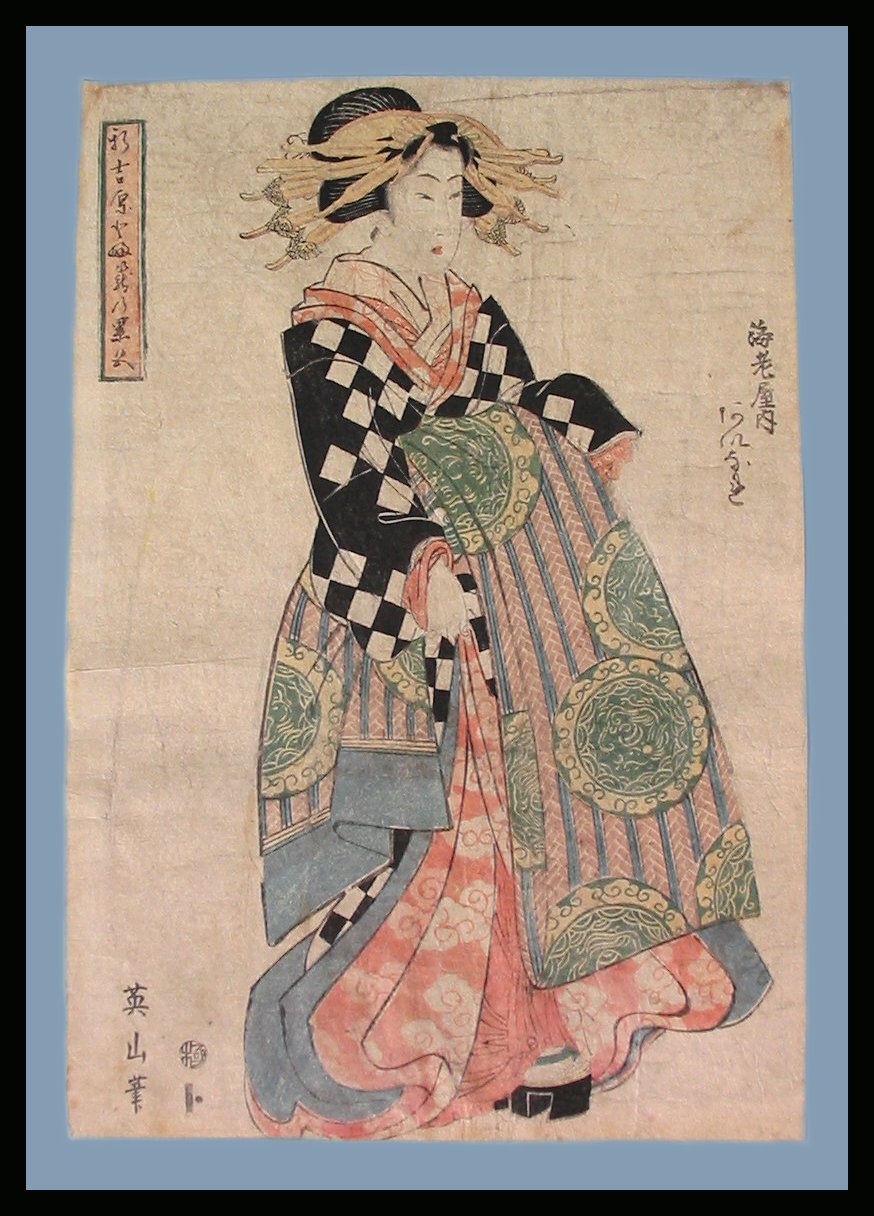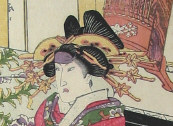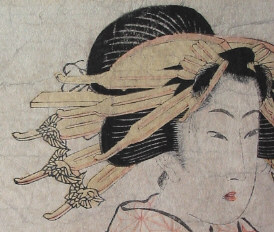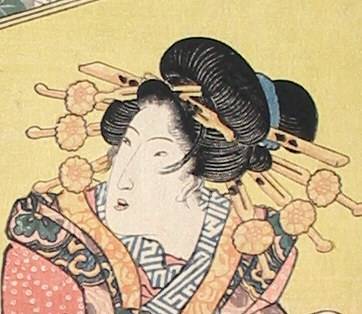 |
JAPANESE PRINTS
A MILLION QUESTIONS
TWO MILLION MYSTERIES
Ukiyo-e Prints浮世絵版画 |
|
Port Townsend, Washington |
| KIKUGAWA EIZAN |
| 菊川英山 |
| きくがわ.えいざん |
|
(1787-1867) |
| Subject: An oiran of the Maru-Ebiya house |
| 花魁 or おいらん |
| Print Size: 14 5/8" X 10" (37.1 x 25.4 cm) |
| Ca. 1815 |
| Signed: Eizan hitsu |
| Publisher: Yamaguchiya Tobei (Kinkōdō) |
| 版元: 山口屋藤兵衛 (錦耕堂) |
| はんもと: やまぐちや.とうべえ (きんこうどう) |
|
SOLD! THANKS B! |

| KANZASHI | ||
| 簪 | ||
| かんざし | ||
| The Ornamental Hairpin | ||
 |
 |
 |
|
Cecilia Segawa Seigle in her Yoshiwara: The Glittering World of the Japanese Courtesan points out that in the middle of the 17th century a famous prostitute would arrive at a house of assignation with her entourage, but with only simple embellishments: her silk robe would be beautiful, but not overwhelming; her hairstyle would be only slightly different than the popular style of the day; and "...courtesans did not yet adorn their hair or use the outlandish number of large combs and hairpins that characterized the courtesans of later centuries. A courtesan simply tied her hair with one or two ribbons...and wore only one comb on her head." (1)
One hundred fifty years later things had changed considerably. Even the "smallest kamuro" had her head "...so heavily decorated with the hairpins and combs of her sister courtesan that she was barely able to carry the weight."(2) Seigle quotes a late 18th century comment by Hara Budayu in which he compares the bedecked heads of courtesans with the displays of toy peddlers. (3) |
||
|
(1) Yoshiwara: The Glittering World of the Japanese Courtesan, by Cecilia Segawa Seigle, published by the University of Hawaii, 1993, p. 66. (2) Ibid., p. 186. Kamuros were the young assistants to the oiran. Researching this commentary I discovered that the word kamuro (禿 or かむろ) is defined by Nelson (3262) as "little girl employed in a brothel," but generally means some form of the word "bald": become bald; wear out; baldness; bald person; baldheaded. If anyone "knows" how these two diverse meanings came to be associated etymologically I would appreciate it if you would get in touch with me. Thanks! (3) Ibid., p. 205.
|
||
|

 HOME
HOME